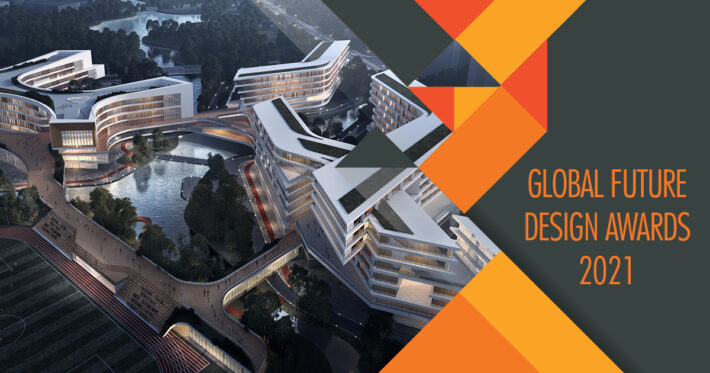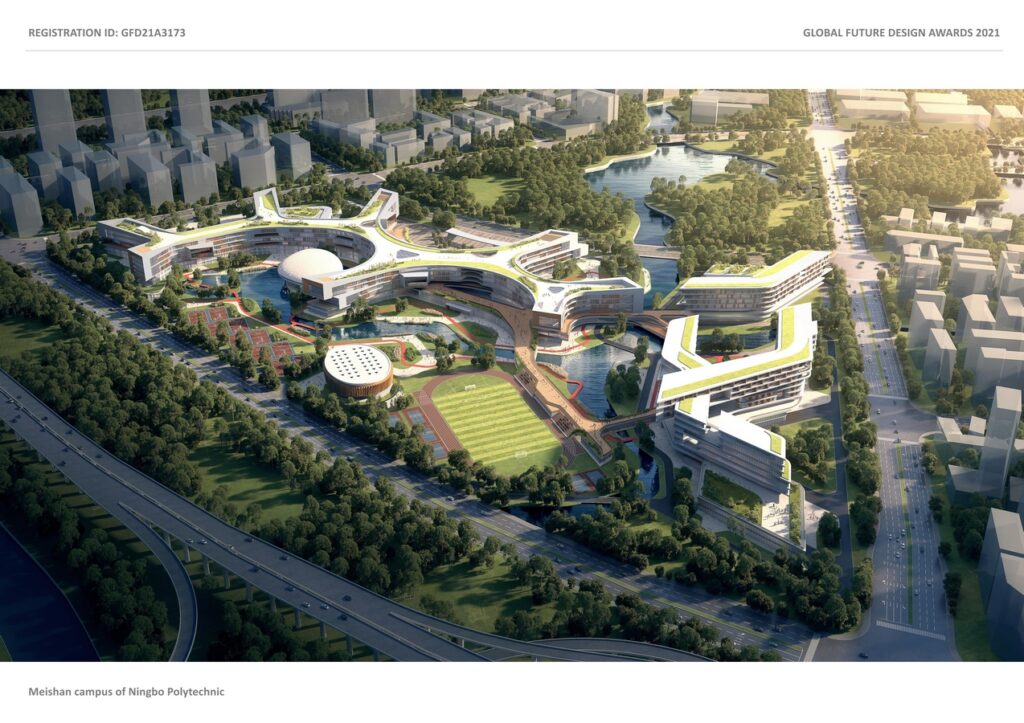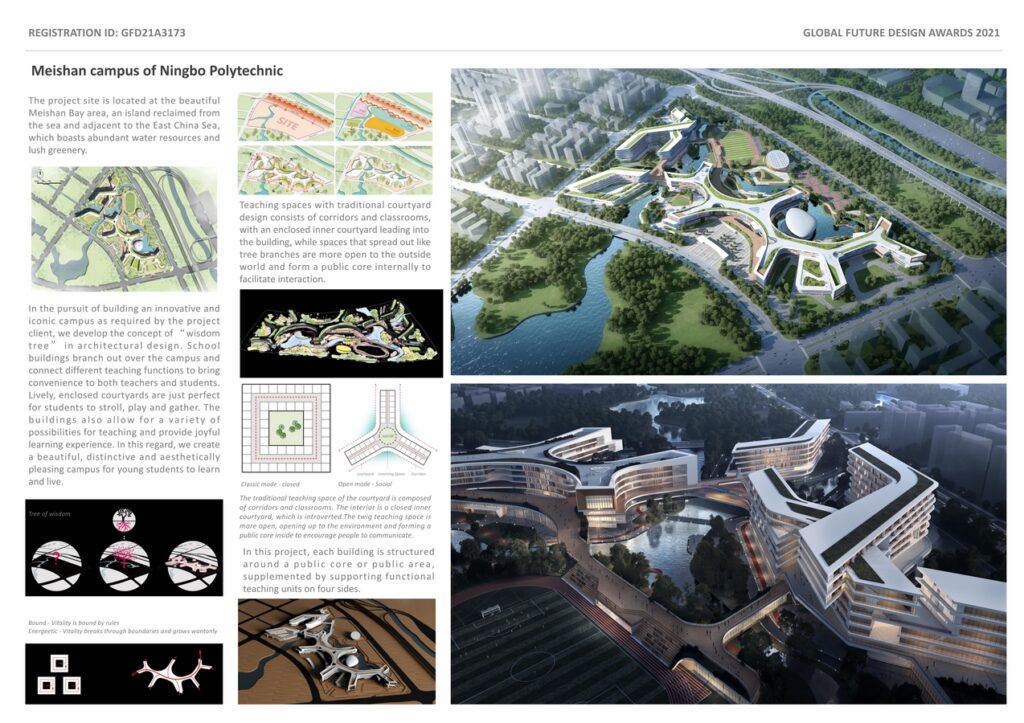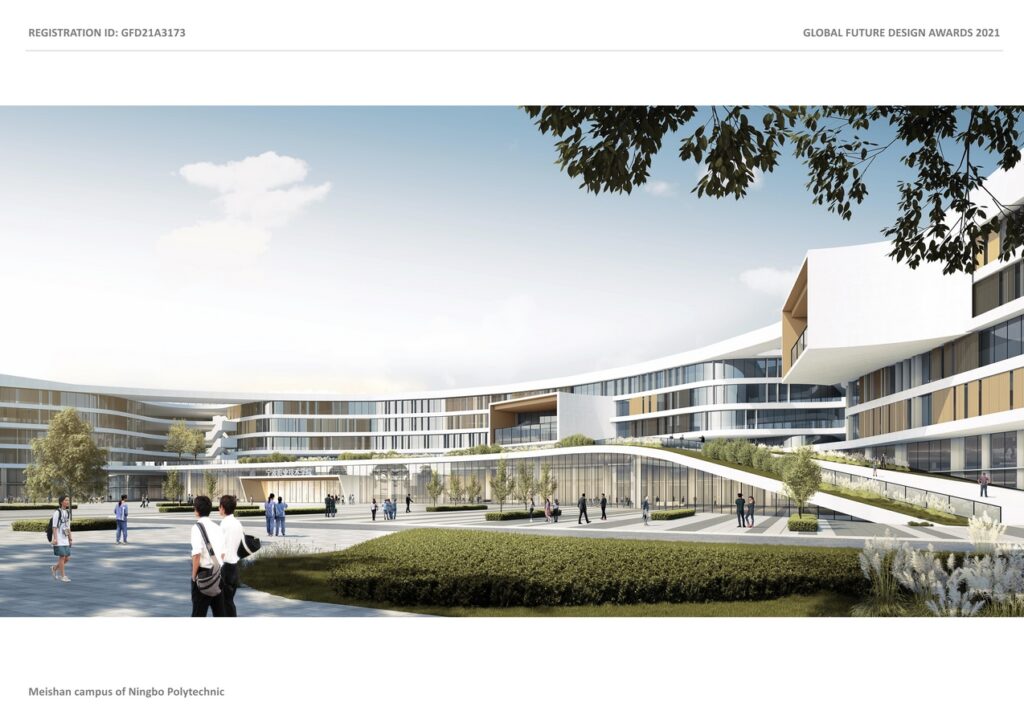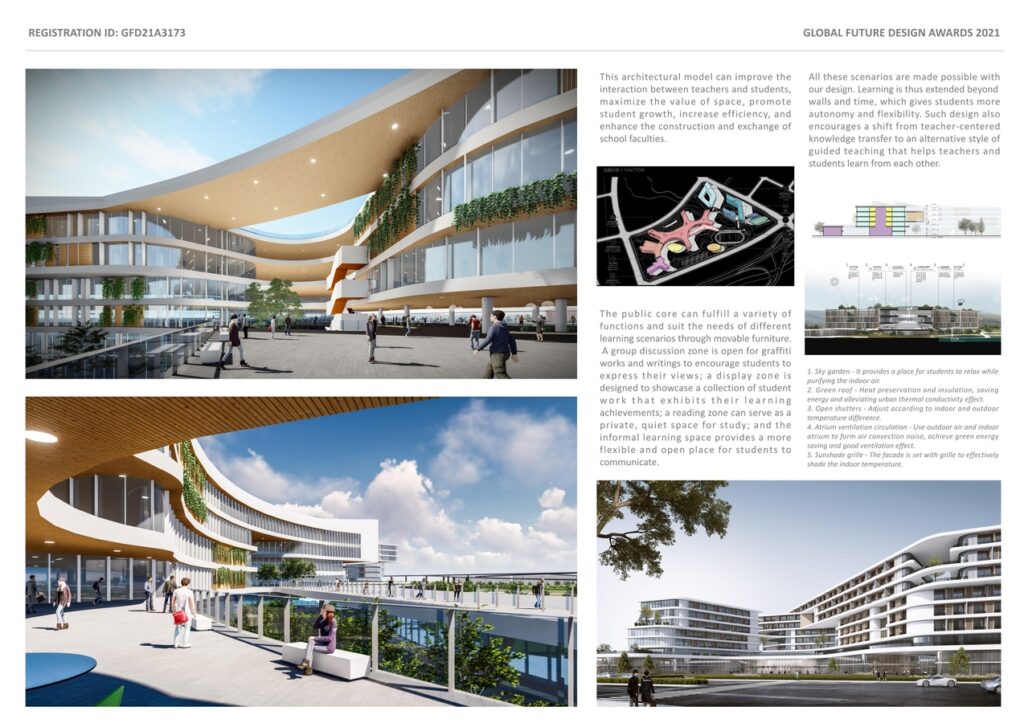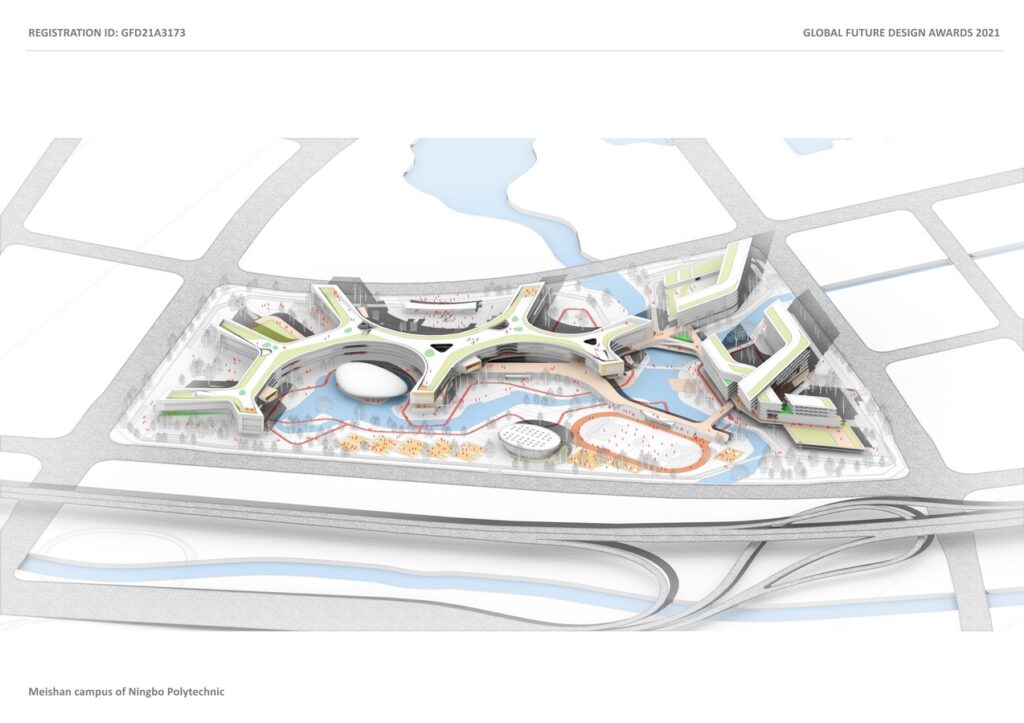The project site is located at the beautiful Meishan Bay area, an island reclaimed from the sea and adjacent to the East China Sea, which boasts abundant water resources and lush greenery. In the pursuit of building an innovative and iconic campus as required by the project client, we develop the concept of “wisdom tree” in architectural design. School buildings branch out over the campus and connect different teaching functions to bring convenience to both teachers and students. Lively, enclosed courtyards are just perfect for students to stroll, play and gather. The buildings also allow for a variety of possibilities for teaching and provide joyful learning experience. In this regard, we create a beautiful, distinctive and aesthetically pleasing campus for young students to learn and live.
Global Future Design Awards 2022: Discounted Entries Open Now! Save $50
Super Early Discount – 20th October 2021 to 30th December 2021 – $199 = $149
🏆 Second Award
Global Future Design Awards 2021
Meishan Campus of Ningbo Polytechnic
Educational Architecture Concept
Firm
DO Design Group
Architect/Designer
DO Design Group
Design Team
WU Yangping, JIN Jiayun, YING Chao, LIU Liyuan, LV Tao, XIA Yuqing, ZHANG Yawen, LIU Lijia, LIN Muxiang
Location
Ningbo City, Zhejiang Province, China
Country
China
Photographer/Copyright
©DO Design Group
Teaching spaces with traditional courtyard design consists of corridors and classrooms, with an enclosed inner courtyard leading into the building, while spaces that spread out like tree branches are more open to the outside world and form a public core internally to facilitate interaction.
In this project, each building is structured around a public core or public area, supplemented by supporting functional teaching units on four sides. This architectural model can improve the interaction between teachers and students, maximize the value of space, promote student growth, increase efficiency, and enhance the construction and exchange of school faculties.
The public core can fulfill a variety of functions and suit the needs of different learning scenarios through movable furniture. A group discussion zone is open for graffiti works and writings to encourage students to express their views; a display zone is designed to showcase a collection of student work that exhibits their learning achievements; a reading zone can serve as a private, quiet space for study; and the informal learning space provides a more flexible and open place for students to communicate. All these scenarios are made possible with our design. Learning is thus extended beyond walls and time, which gives students more autonomy and flexibility. Such design also encourages a shift from teacher-centered knowledge transfer to an alternative style of guided teaching that helps teachers and students learn from each other.
Registrations open… Don’t miss the opportunity to win with your visionary projects.


